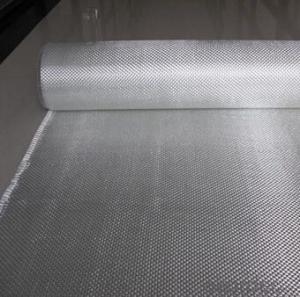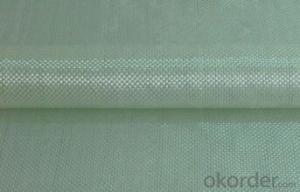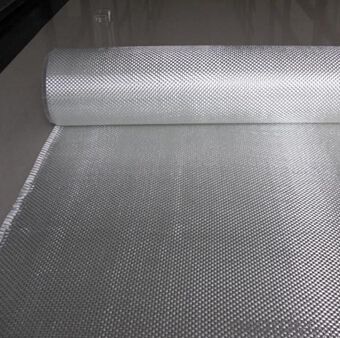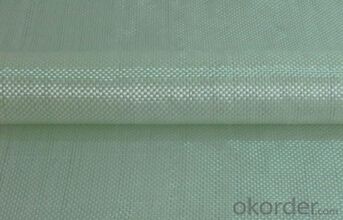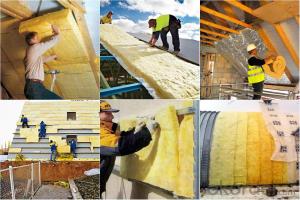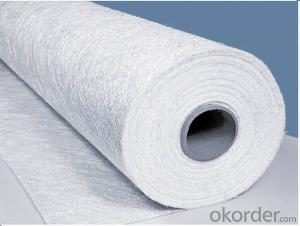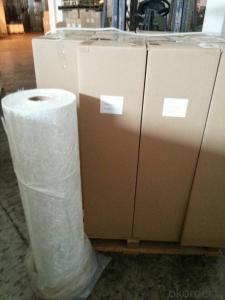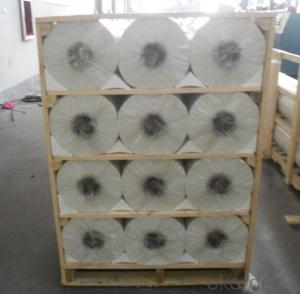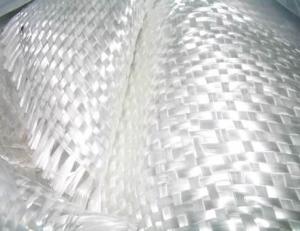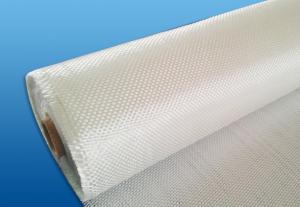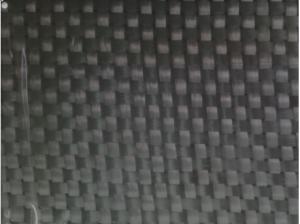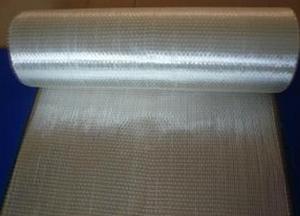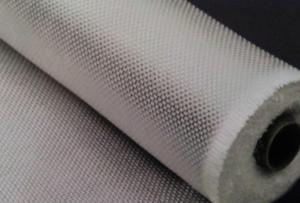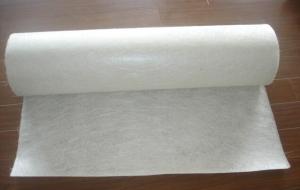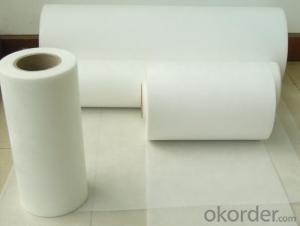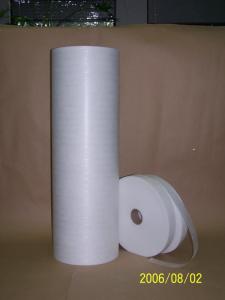Fiberglass Mat Tissue C-Glass Woven Roving, 500g, 1m
- Loading Port:
- China Main Port
- Payment Terms:
- TT or LC
- Min Order Qty:
- -
- Supply Capability:
- -
OKorder Service Pledge
OKorder Financial Service
You Might Also Like
Structure of woven roving Description
Glass woven rovings are bidirectional fabric by direct rovings in plain weave pattern. They are applicable for hand lay-up, winding and compress molding process, suitable for manufacturing tank, boat, automobile parts and other FRP products.
1,high strenth,corosion and resistence
2,consistent thickness,no fuzz
3,rapid impregnating
Main Features of the woven roving
1)Drapes well to suit the surface of intricate moulds
2)Fast wet-through and wet out
3)Easy handing and better appearance of the composite parts
4)Compatible with Unsaturated polyester resin
5)Very high laminate strength properties
Woven roving Images
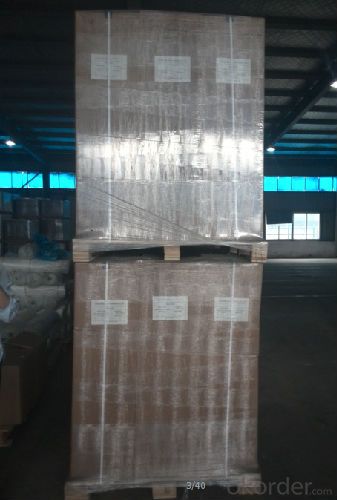
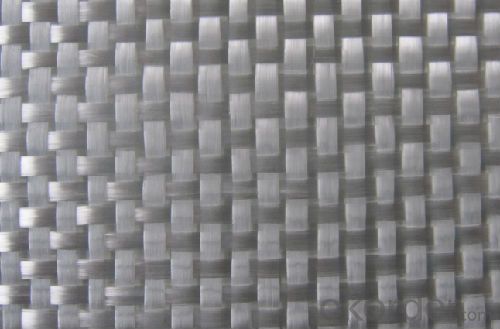
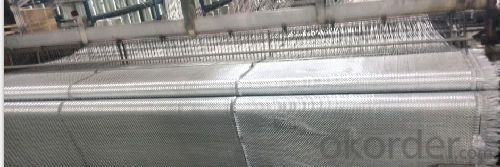
Woven roving Specification:
Normal type | EWR800 | EWR400 | EWR300 | EWR500 | EWR600 |
Thickness (mm) | 0.8 | 0.4 | 0.3 | 0.5 | 0.6 |
Density(warpxweft) (end/cm) | 1.8x1.5+/-10% | 3.6x3.2+/-10% | 4.6x4.1+/-10% | 2.2X2.0+/-10% | 2.6X2.4+/-10% |
Tex (warpxweft) | 2400x2400 | 600X600 | 300x400 | 1200x1200 | 1200X1200 |
Moisture content(%) | <0.2% | <0.2% | <0.2% | <0.2% | <0.2% |
Loss on ignition(%) | 0.4 – 0.8 | 0.4-0.8 | 0.4-0.8 | 0.4-08 | 0.4-0.8 |
Width(cm) | 125+/-1 | 125+/-1 | 125+/-1 | 125+/-1 | 125+/-1 |
Weight (g/m2) | 816+/-41 | 408+/-32 | 300+/-15 | 500+/-25 | 600+/-30 |
Weight per roll(kg) | 45 | 46 | 50 | 45 | 45 |
Glass | E-glass | E-glass | E-glass | E-glass | E-glass |
FAQ of woven roving:
Delivery Detail: 15-21days
Other spec. can be custom made as per customer's request.
Application of Fiberglass Woven Roving:
a) boats ,vessels ,plane
b) automotive parts ,furniture and sports facilities
c) resins system,such as polyeser,vinylester and epoxy resins
- Q: Is fiberglass mat tissue suitable for high-temperature applications?
- No, fiberglass mat tissue is not suitable for high-temperature applications. Fiberglass mat tissue is typically made from thin strands of glass fibers that are woven together to create a non-woven fabric. While fiberglass is known for its strength and durability, it has a low melting point and is not designed to withstand high temperatures. When exposed to high temperatures, fiberglass mat tissue can melt or degrade, leading to structural weakness and potential failure. Therefore, it is important to select a different material that is specifically designed for high-temperature applications, such as ceramic or silicone-based products.
- Q: Does fiberglass mat tissue provide good acoustical performance?
- Fiberglass mat tissue does provide good acoustical performance. Due to its composition, which includes fine glass fibers, this material is effective in absorbing sound waves and reducing echo and reverberation in a space. Fiberglass mat tissue has excellent sound absorption properties, making it suitable for applications in various industries such as construction, automotive, and aerospace. Its ability to dampen sound and improve acoustics makes it a popular choice for soundproofing walls, ceilings, and floors in buildings. Additionally, fiberglass mat tissue is lightweight and easy to install, further enhancing its appeal for acoustical applications.
- Q: How does fiberglass mat tissue compare to other types of insulation materials?
- Fiberglass mat tissue offers several advantages over other types of insulation materials. Firstly, it has excellent thermal insulation properties, making it highly effective in reducing heat transfer and maintaining a comfortable indoor environment. Additionally, fiberglass mat tissue is lightweight, easy to handle, and can be easily installed in various applications, such as walls, roofs, and floors. It is also resistant to moisture, mold, and pests, ensuring long-lasting performance and durability. Moreover, fiberglass mat tissue is cost-effective and provides great value for money due to its high efficiency and low maintenance requirements. Overall, fiberglass mat tissue stands out as a reliable and efficient insulation material in comparison to others available in the market.
- Q: Can fiberglass mat tissue be used for swimming pool construction?
- Yes, fiberglass mat tissue can be used for swimming pool construction. It is commonly used as a reinforcement material to provide strength and durability to the pool structure.
- Q: Can fiberglass mat tissue be used for making furniture?
- No, fiberglass mat tissue is not suitable for making furniture. It is primarily used in composite materials and construction applications, not for furniture manufacturing.
- Q: How does the surface finish of fiberglass mat tissue affect its adhesion to resin?
- The surface finish of fiberglass mat tissue can significantly affect its adhesion to resin. The surface finish refers to the texture or smoothness of the fiberglass mat tissue. In general, a rougher surface finish tends to provide better adhesion to resin. This is because a rough surface provides more surface area for the resin to adhere to, allowing for a stronger bond. Rougher surface finishes can be achieved through various manufacturing techniques, such as using coarser fibers or adding texturizing agents during production. On the other hand, a smoother surface finish may result in weaker adhesion. A smooth surface does not provide as much surface area for the resin to bond with, leading to a weaker and less durable bond. Smoother surface finishes can be achieved by using finer fibers or through additional processing steps to smooth out the surface. It is important to consider the specific application and requirements when choosing the surface finish of fiberglass mat tissue. For applications that require high strength and durability, a rougher surface finish may be preferred to ensure optimal adhesion to the resin. Conversely, for applications where a weaker bond is acceptable or where a smoother surface finish is desired for aesthetic reasons, a smoother surface finish may be chosen. Ultimately, the surface finish of fiberglass mat tissue plays a critical role in determining the adhesion to resin. It is essential to select the appropriate surface finish to achieve the desired strength, durability, and performance in various applications.
- Q: Can fiberglass mat tissue be used for roofing applications?
- Yes, fiberglass mat tissue can be used for roofing applications. Fiberglass mat tissue is a lightweight and flexible material that is commonly used in the construction industry for various purposes, including roofing. It is often used as a reinforcement layer in roofing systems to enhance their strength and durability. The fiberglass mat tissue is typically impregnated with bitumen or other waterproofing agents to create a water-resistant barrier on the roof. It also helps to improve the fire resistance and thermal insulation properties of the roof. Moreover, fiberglass mat tissue is resistant to mold, mildew, and other common roofing issues, making it an ideal choice for roofing applications.
- Q: Can fiberglass mat tissue be used for making lightweight furniture?
- Yes, fiberglass mat tissue can be used for making lightweight furniture. Fiberglass mat tissue is a thin, lightweight material made from glass fibers that are bonded together with a resin. It is commonly used in various industries, including automotive, aerospace, and construction, for its excellent strength-to-weight ratio. When used in furniture manufacturing, fiberglass mat tissue can be layered and molded into different shapes and forms, providing structural support and rigidity while keeping the overall weight of the furniture low. This makes it an ideal choice for creating lightweight furniture pieces that are easy to move around and transport. Additionally, fiberglass mat tissue is highly durable and resistant to moisture, chemicals, and heat, making it suitable for both indoor and outdoor furniture applications. Its versatility allows furniture designers and manufacturers to create unique and innovative designs while maintaining the desired lightweight characteristics. However, it is important to note that the final product's quality and performance will also depend on the overall design, construction, and other materials used in combination with the fiberglass mat tissue. Therefore, proper engineering and manufacturing techniques should be employed to ensure the furniture's longevity, stability, and safety.
- Q: Can fiberglass mat tissue be used for making insulation boards?
- Yes, fiberglass mat tissue can be used for making insulation boards. Fiberglass mat tissue is a lightweight, flexible material that is commonly used in the production of insulation boards. It provides excellent thermal insulation properties, as well as sound absorption and fire resistance. The mat tissue is typically layered and compressed to form the insulation boards, creating a durable and effective barrier against heat transfer. Additionally, fiberglass mat tissue is resistant to moisture, mold, and pests, making it a reliable choice for insulation applications. Overall, fiberglass mat tissue is a suitable material for making insulation boards due to its insulation performance, durability, and resistance to various environmental factors.
- Q: How does fiberglass mat tissue compare to cellulose insulation?
- Fiberglass mat tissue and cellulose insulation differ in terms of material composition and insulation properties. Fiberglass mat tissue is made from fine glass fibers, while cellulose insulation is composed of recycled paper fibers treated with fire-retardant chemicals. Fiberglass mat tissue offers higher R-value, meaning it provides better thermal insulation and energy efficiency. Additionally, it is resistant to moisture and does not promote mold growth. On the other hand, cellulose insulation is more affordable, environmentally friendly, and provides better sound insulation. Ultimately, the choice between the two depends on specific insulation needs, budget, and environmental considerations.
Send your message to us
Fiberglass Mat Tissue C-Glass Woven Roving, 500g, 1m
- Loading Port:
- China Main Port
- Payment Terms:
- TT or LC
- Min Order Qty:
- -
- Supply Capability:
- -
OKorder Service Pledge
OKorder Financial Service
Similar products
Hot products
Hot Searches
Related keywords
